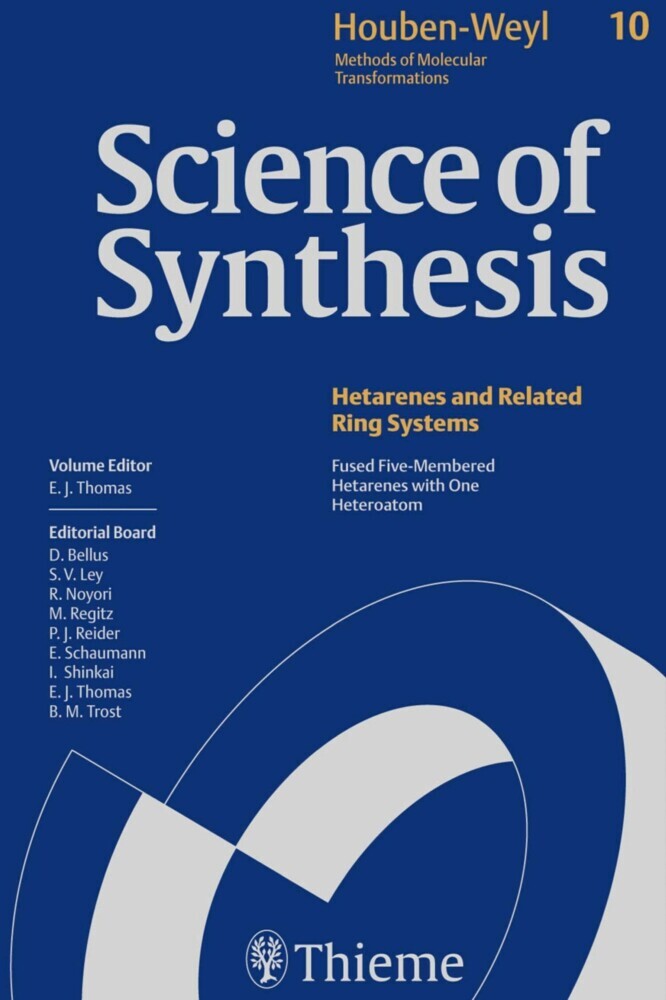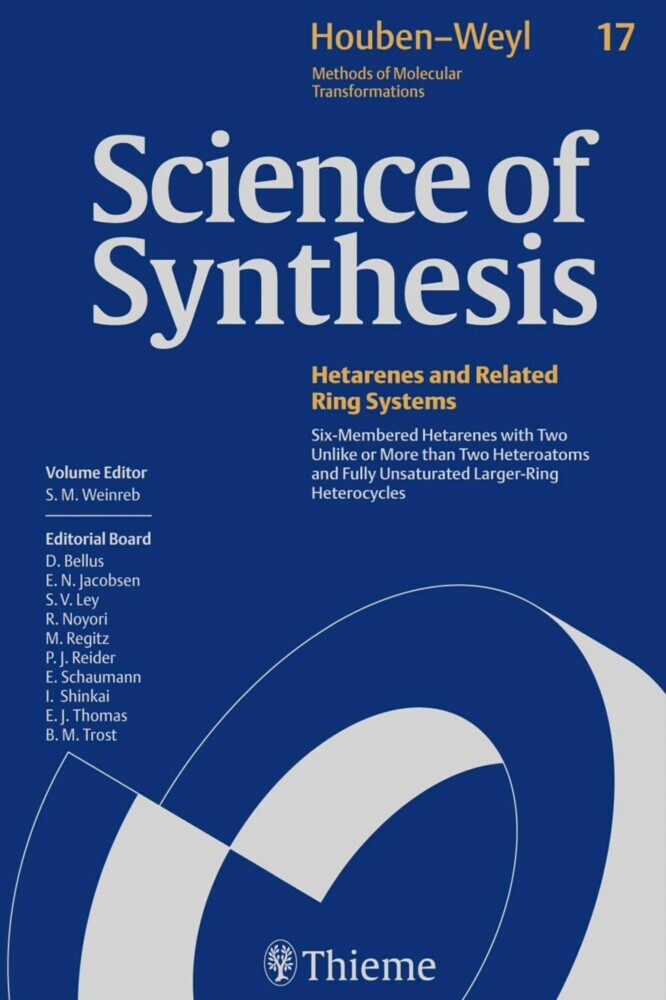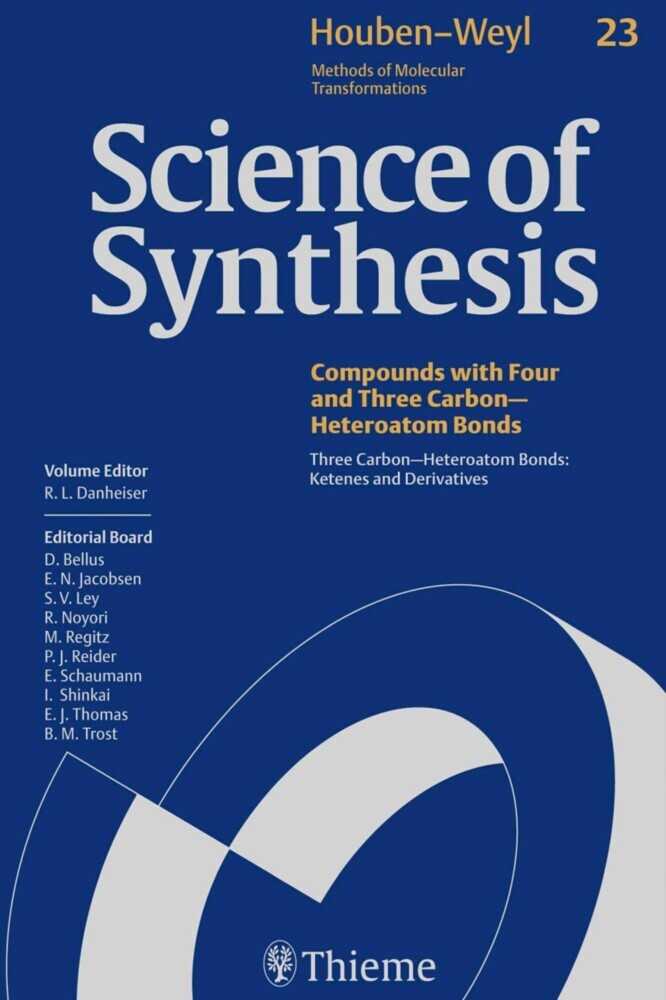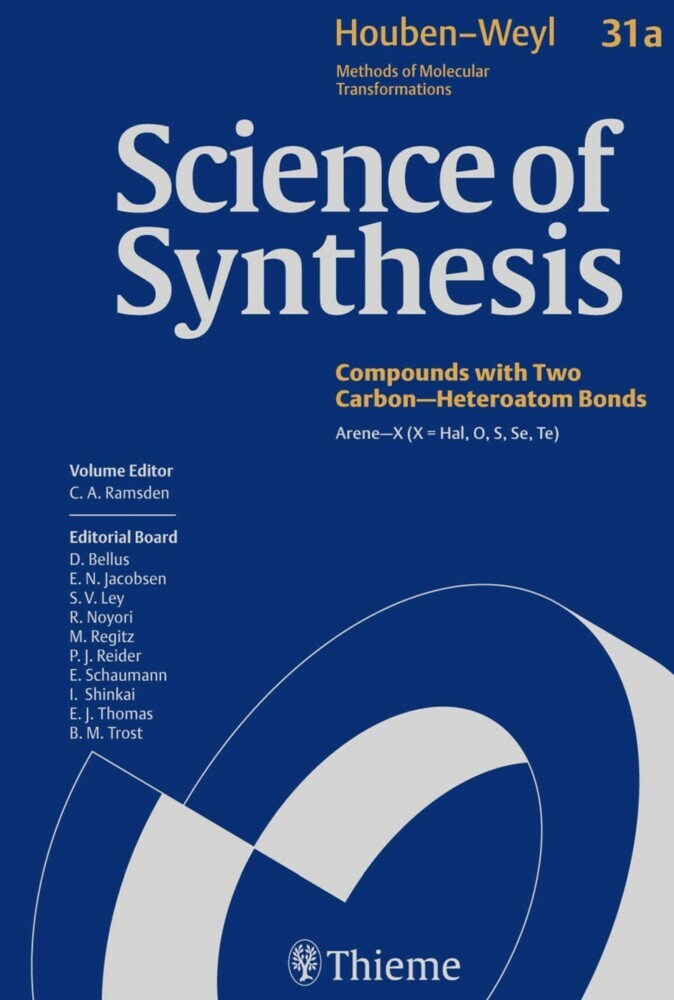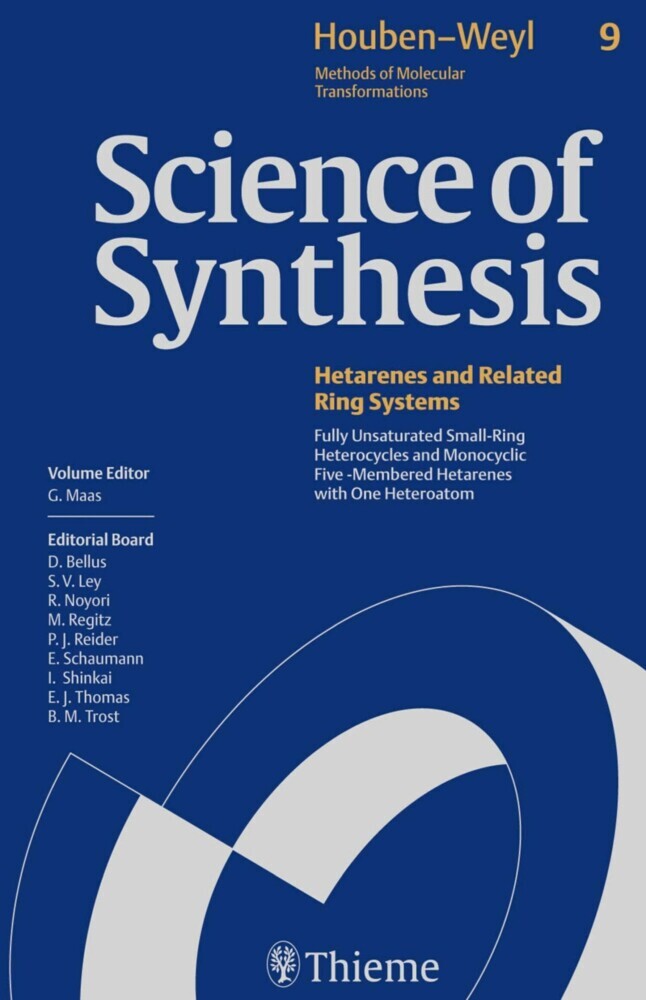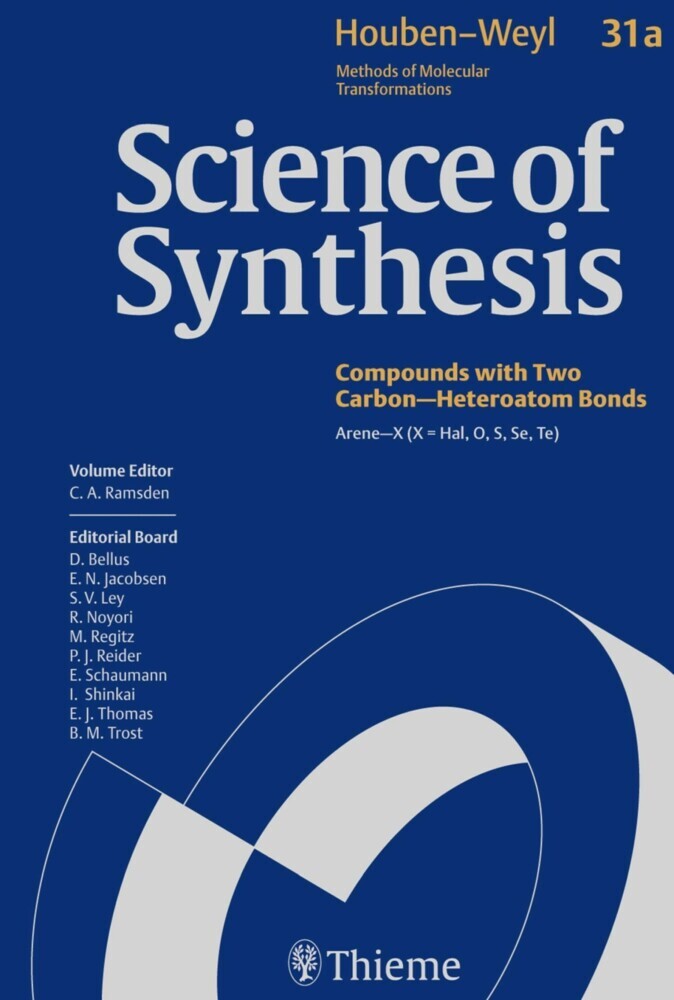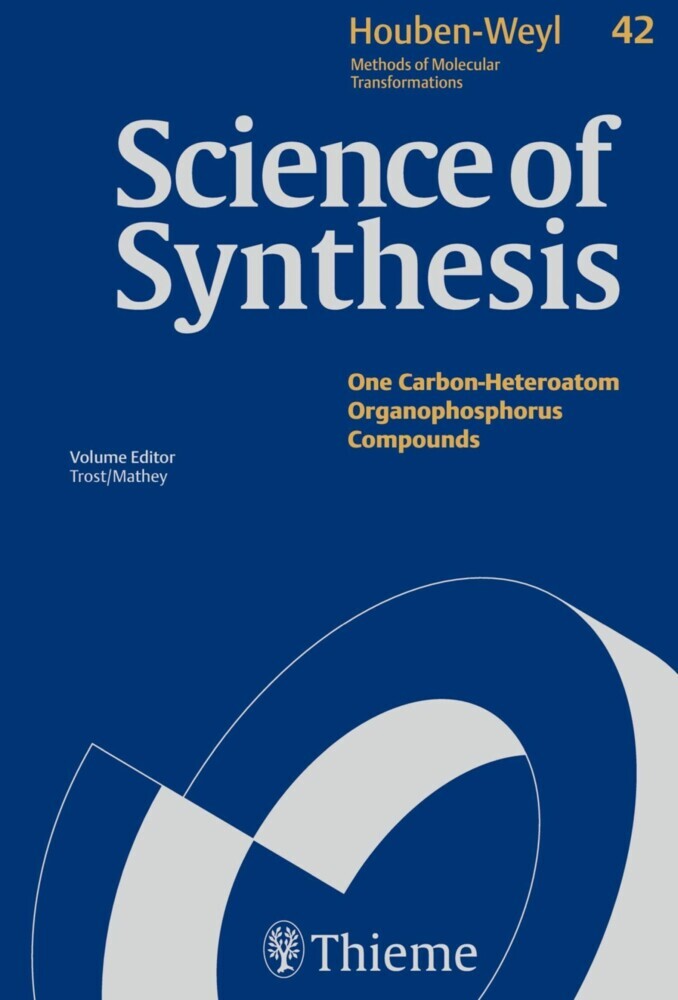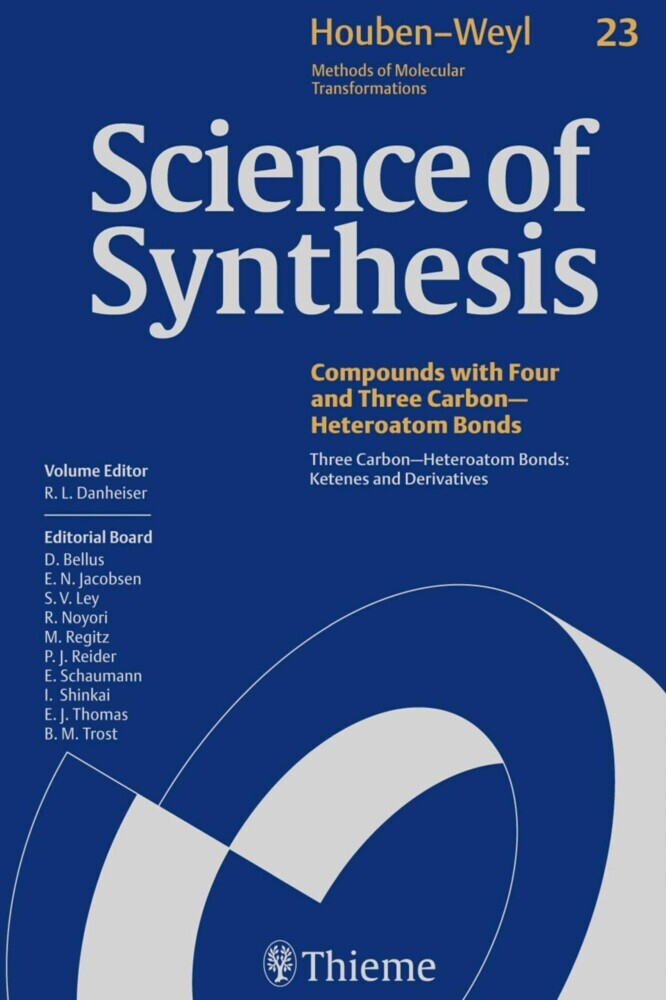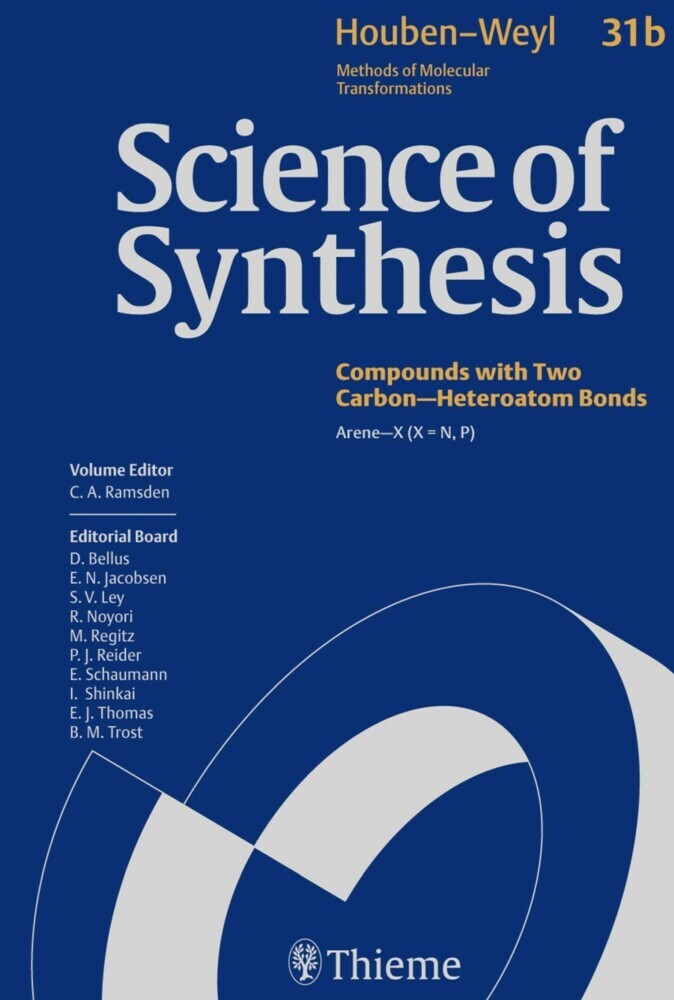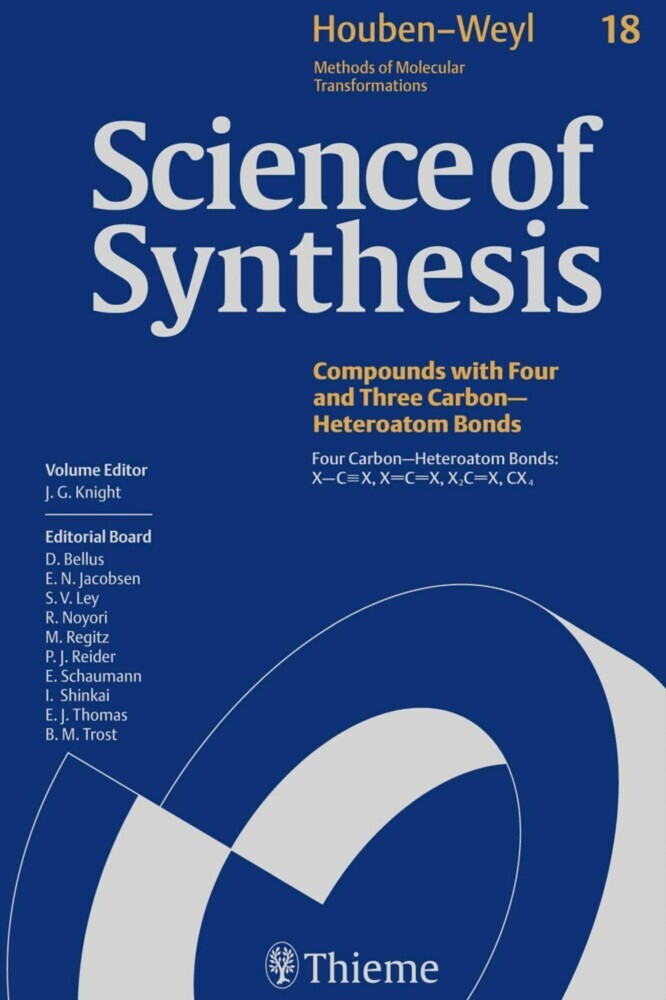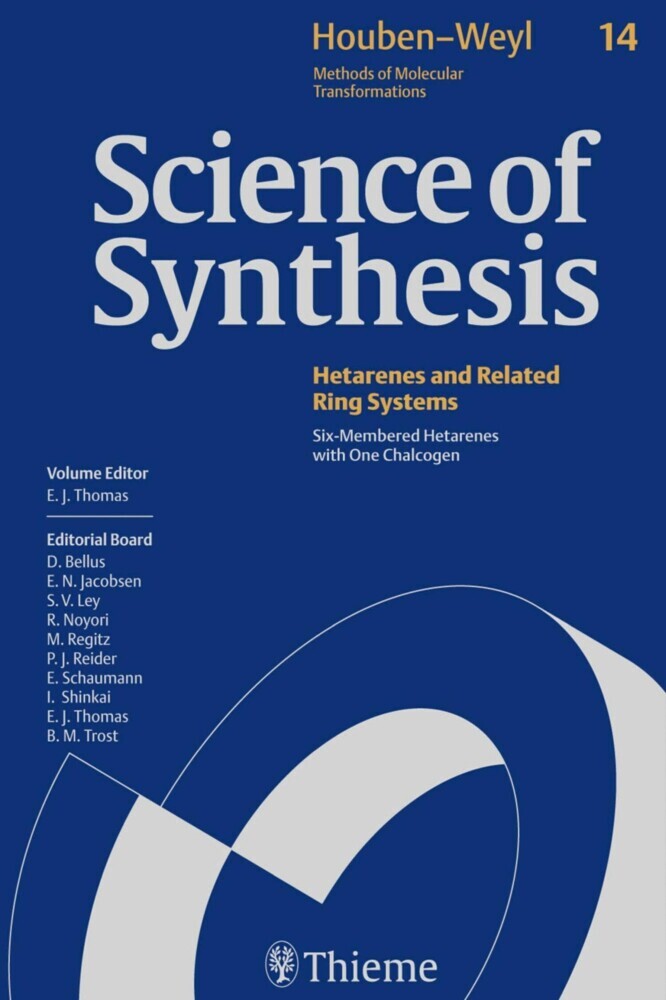Science of Synthesis: Houben-Weyl Methods of Molecular Transformations Vol. 10
Science of Synthesis: Houben-Weyl Methods of Molecular Transformations Vol. 10
Turning Information into Knowledge
Science of Synthesis: Houben-Weyl Methods of Molecular Transformations is the entirely new edition of the acclaimed reference series, Houben-Weyl, the standard synthetic chemistry resource since 1909. This new edition is published in English and will comprise of 48 volumes published between the years 2000 and 2008.
Science of Synthesis is a quality reference work developed by a highly esteemed editorial board to provide a comprehensive and critical selection of reliable organic and organometallic synthetic methods. Science of Synthesis is designed to be the first point of reference when searching for a synthesis strategy.
This volume covers the synthesis of five-membered heterocyclic compounds with an oxygen-, sulfur-, nitrogen-, selenium-, tellurium-, or phosphorus-containing heterocycle fused to one or two benzenoid rings. Volume 10 presents selected procedures for the synthesis of benzoannulated five-membered hetarenes. It covers the synthesis of heterocyclic compounds with widely differing stabilities and chemical and physical properties ranging from unstable hetarenes, such as benzo[c]furans, to very stable dibenzohetarenes, such as dibenzothiophene.
For full information on the Science of Synthesis series, visit the Science of Synthesis Homepage. Series Editors: D. Bellus, S. V. Ley, R. Noyori, M. Regitz, E. Schaumann, I. Shinkai, E. J. Thomas, B. M. Trost, P. J. Reider.
E. Jim Thomas
1;Science of Synthesis - Volume 10: Fused Five-Membered Hetarenes with One Heteroatom;1 1.1;Title page;3 1.2;Imprint;5 1.3;Preface;6 1.4;Overview;8 1.5;Table of Contents;10 1.6;Introduction;44 1.7;10.1 Product Class 1: Benzo[b]furans;54 1.7.1;10.1.1 Synthesis by Ring-Closure Reactions;60 1.7.1.1;10.1.1.1 By Annulation to an Arene;60 1.7.1.1.1;10.1.1.1.1 By Formation of One O--C and One C--C Bond;60 1.7.1.1.1.1;10.1.1.1.1.1 Method 1: From 2-Halophenols and Alkynes;61 1.7.1.1.1.1.1;10.1.1.1.1.1.1 Variation 1: Using a Copper(I) Acetylide;61 1.7.1.1.1.1.2;10.1.1.1.1.1.2 Variation 2: Using an Alkyne and Copper(I) Oxide;61 1.7.1.1.1.1.3;10.1.1.1.1.1.3 Variation 3: Using an Alkyne and Copper Powder;62 1.7.1.1.1.1.4;10.1.1.1.1.1.4 Variation 4: Using an Alkyne with Palladium(II) and Copper(I) Catalysis in the Presence of an Organic Base;62 1.7.1.1.1.1.5;10.1.1.1.1.1.5 Variation 5: Using an Alkyne with Palladium(II) and Copper(I) Catalysis in the Presence of an Inorganic Base;64 1.7.1.1.1.1.6;10.1.1.1.1.1.6 Variation 6: Using an Alkyne with Palladium(II) and Copper(I); Combinatorial Procedure;64 1.7.1.1.1.1.7;10.1.1.1.1.1.7 Variation 7: Using an Alkyne with Palladium(II);65 1.7.1.1.1.1.8;10.1.1.1.1.1.8 Variation 8: By Photochemical Trapping of Zwitterions;66 1.7.1.1.1.2;10.1.1.1.1.2 Method 2: From 1,4-Quinones;66 1.7.1.1.1.3;10.1.1.1.1.3 Method 3: From 2-Hydroxybenzaldehydes and 2-Hydroxyphenyl Ketones;67 1.7.1.1.1.3.1;10.1.1.1.1.3.1 Variation 1: Using Phenacyl Bromide;68 1.7.1.1.1.3.2;10.1.1.1.1.3.2 Variation 2: Using Phenacyl Bromide Under Phase-Transfer Conditions;68 1.7.1.1.1.3.3;10.1.1.1.1.3.3 Variation 3: Using Bromoacetaldehyde;69 1.7.1.1.1.3.4;10.1.1.1.1.3.4 Variation 4: Using Chloroacetone;69 1.7.1.1.1.3.5;10.1.1.1.1.3.5 Variation 5: Using Ethyl Bromoacetate;70 1.7.1.1.1.3.6;10.1.1.1.1.3.6 Variation 6: Using Ethyl Chloroacetoacetate;71 1.7.1.1.1.3.7;10.1.1.1.1.3.7 Variation 7: Using Bromonitromethane;71 1.7.1.1.1.3.8;10.1.1.1.1.3.8 Variation 8: Using Diethyl a-Bromomalonate;72 1.7.1.1.1.3.9;10.1.1.1.1.3.9 Variation 9: Using Benzyl Halides;72 1.7.1.1.1.4;10.1.1.1.1.4 Method 4: From Methyl 2-Hydroxybenzoates;73 1.7.1.1.1.5;10.1.1.1.1.5 Method 5: From Phenols and a-Haloacyl Halides;73 1.7.1.1.1.6;10.1.1.1.1.6 Method 6: By Intramolecular Wittig Reactions;74 1.7.1.1.1.7;10.1.1.1.1.7 Method 7: From O-Arylketoximes;74 1.7.1.1.1.8;10.1.1.1.1.8 Method 8: By Claisen Rearrangement of Phenyl Propargyl Ethers and Related Species;75 1.7.1.1.1.8.1;10.1.1.1.1.8.1 Variation 1: By Claisen Rearrangement of Phenyl Propargyl Ethers;75 1.7.1.1.1.8.2;10.1.1.1.1.8.2 Variation 2: By Claisen Rearrangement of Phenyl Propargyl Ethers Using Cesium Fluoride;76 1.7.1.1.1.8.3;10.1.1.1.1.8.3 Variation 3: By Claisen Rearrangement of Aryl 2-Chloroprop-2-enyl Ethers;77 1.7.1.1.2;10.1.1.1.2 By Formation of Two C--C Bonds;78 1.7.1.1.2.1;10.1.1.1.2.1 Method 1: By One-Pot, Acid-Catalyzed Cyclization of a-Aryloxy Ketones;78 1.7.1.1.3;10.1.1.1.3 By Formation of One O--C Bond;79 1.7.1.1.3.1;10.1.1.1.3.1 Method 1: From 2-Ethynylphenols and Their Derivatives;79 1.7.1.1.3.1.1;10.1.1.1.3.1.1 Variation 1: From a 2-Ethynylphenol with Palladium Catalysis;80 1.7.1.1.3.1.2;10.1.1.1.3.1.2 Variation 2: From a 2-Alkynylphenol with Palladium Catalysis: Introduction of Acyl Functionality;80 1.7.1.1.3.1.3;10.1.1.1.3.1.3 Variation 3: From a 2-[(Trimethylsilyl)ethynyl]phenyl Acetate with Palladium Catalysis;81 1.7.1.1.3.1.4;10.1.1.1.3.1.4 Variation 4: From 2-Alkynylphenols and Allyl Carbonates with Palladium Catalysis;82 1.7.1.1.3.1.5;10.1.1.1.3.1.5 Variation 5: From 2-(Triisopropylsiloxy)phenylalkynes;83 1.7.1.1.3.1.6;10.1.1.1.3.1.6 Variation 6: From 4-(2-Hydroxyaryl)-1,2,3-thiadiazoles;84 1.7.1.1.3.1.7;10.1.1.1.3.1.7 Variation 7: From Dealkylation of 2-Methoxyphenylalkynes;84 1.7.1.1.3.1.8;10.1.1.1.3.1.8 Variation 8: From Flash-Vacuum Pyrolysis of (2-Methoxybenzoyl)alkylidenetriphenylphosphoranes;85 1.7.1.1.3.1.9;10.1.1.1.3.1.9 Variation 9:
Alan Aitken, R.
Thomas, Eric Jim
| ISBN | 9783131718211 |
|---|---|
| Artikelnummer | 9783131718211 |
| Medientyp | E-Book - PDF |
| Copyrightjahr | 2014 |
| Verlag | Georg Thieme Verlag KG |
| Umfang | 916 Seiten |
| Sprache | Englisch |
| Kopierschutz | Digitales Wasserzeichen |

